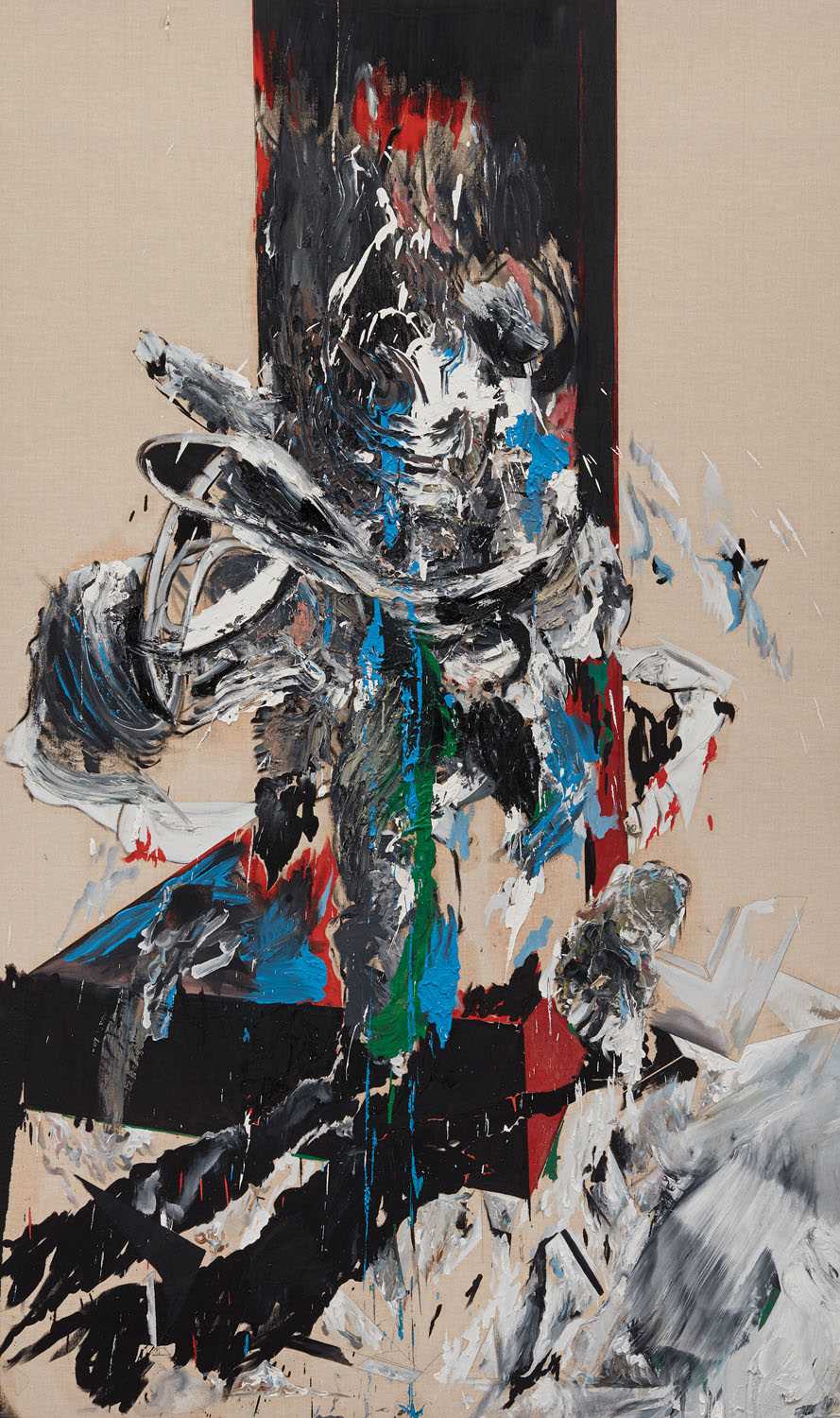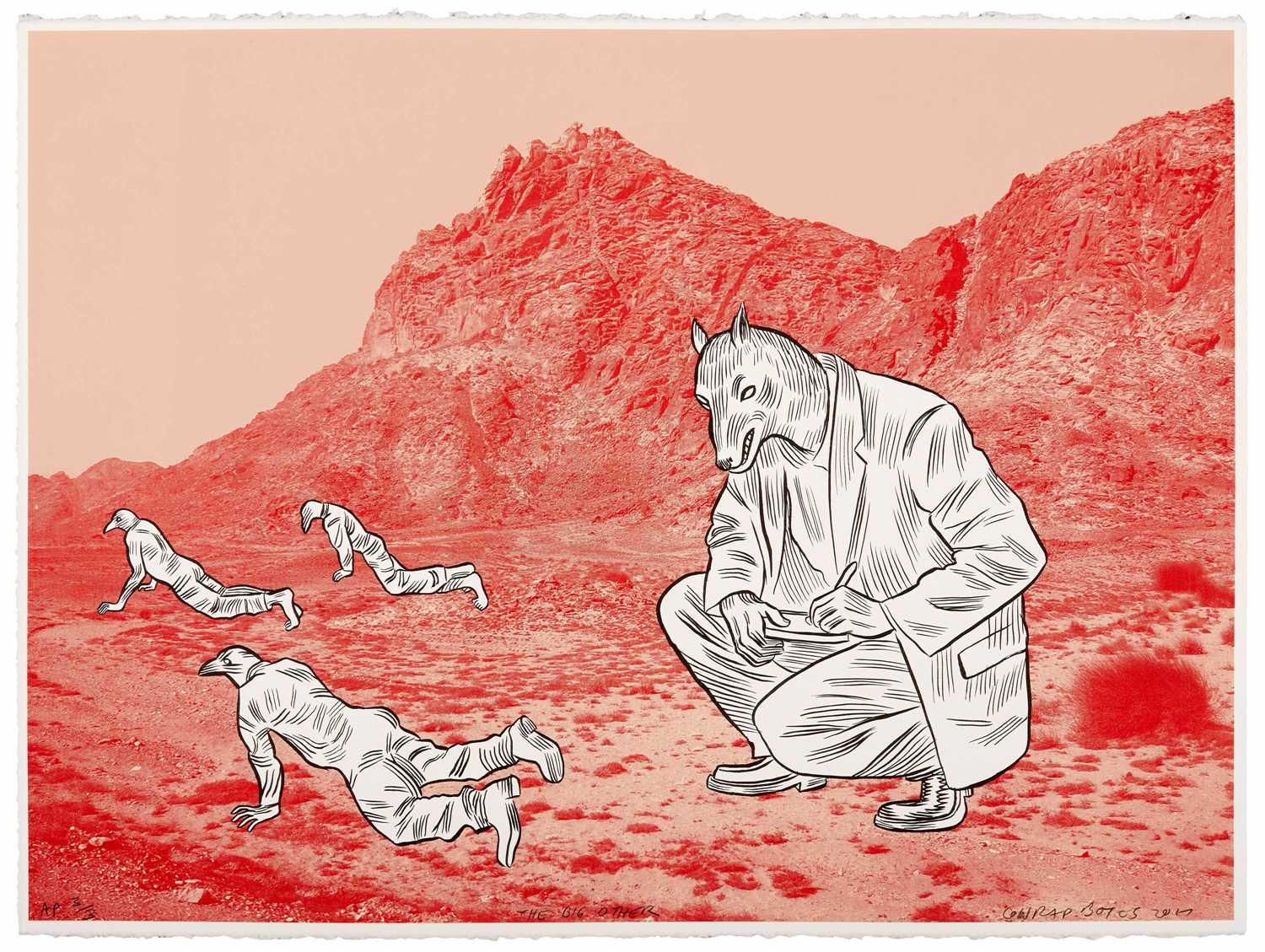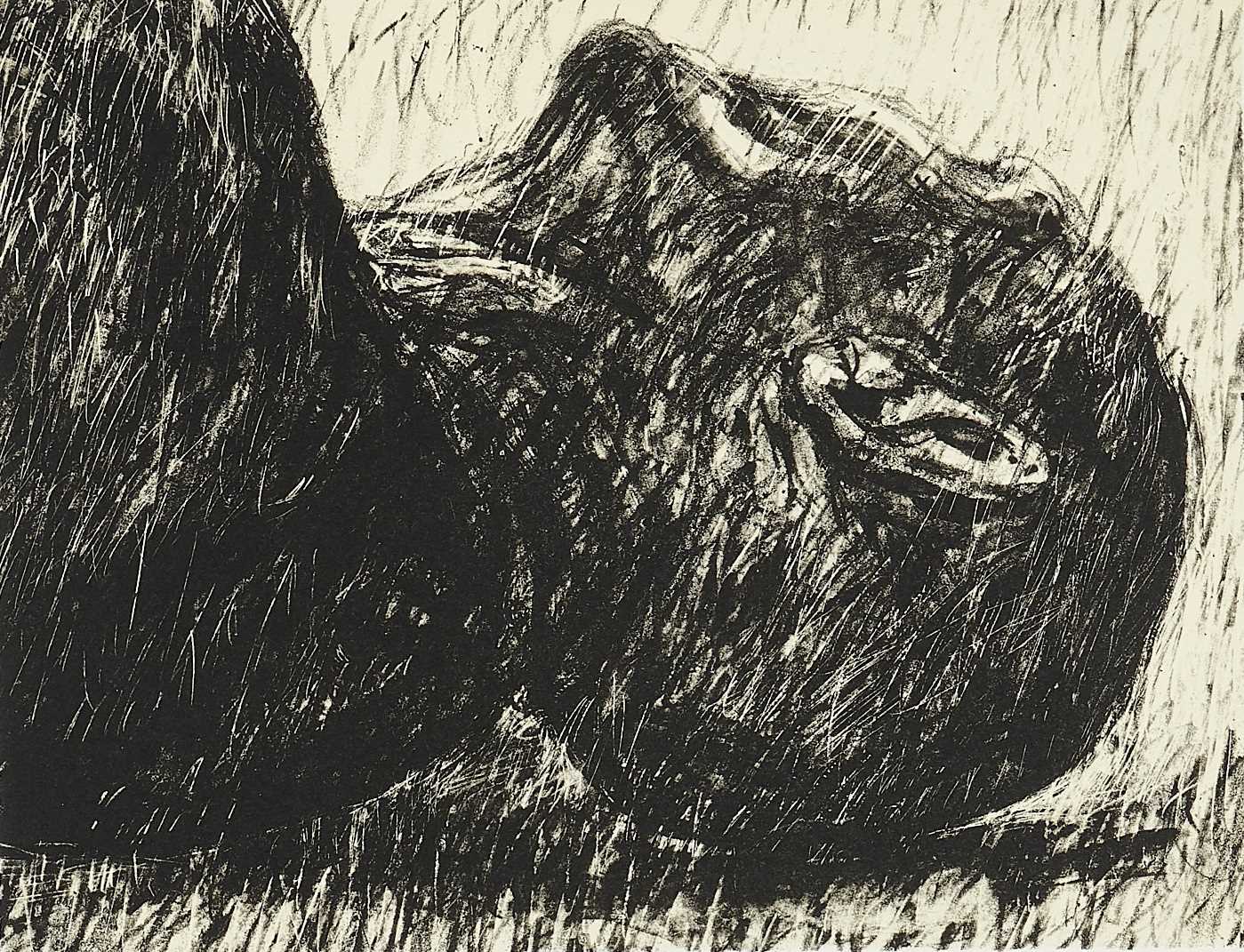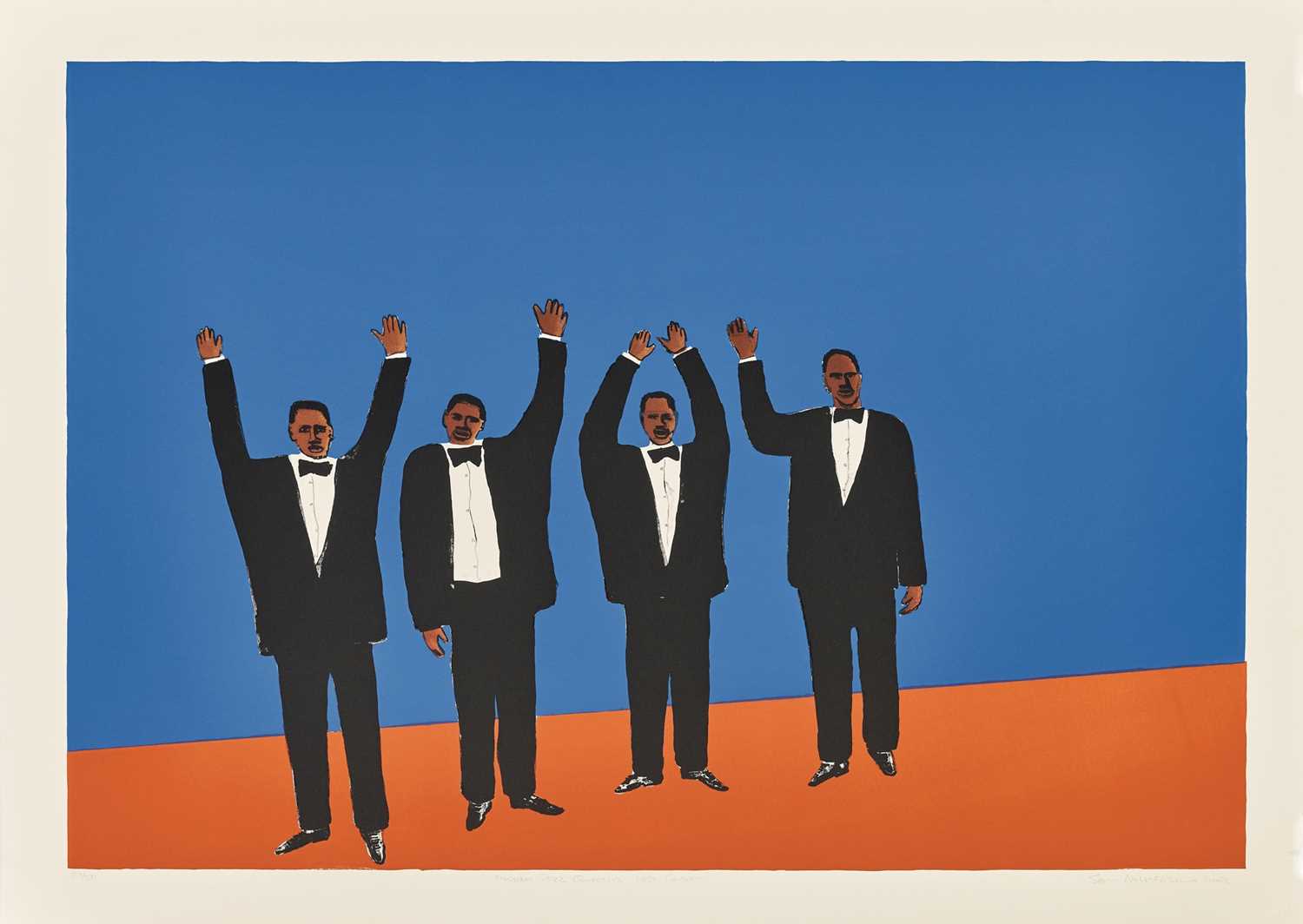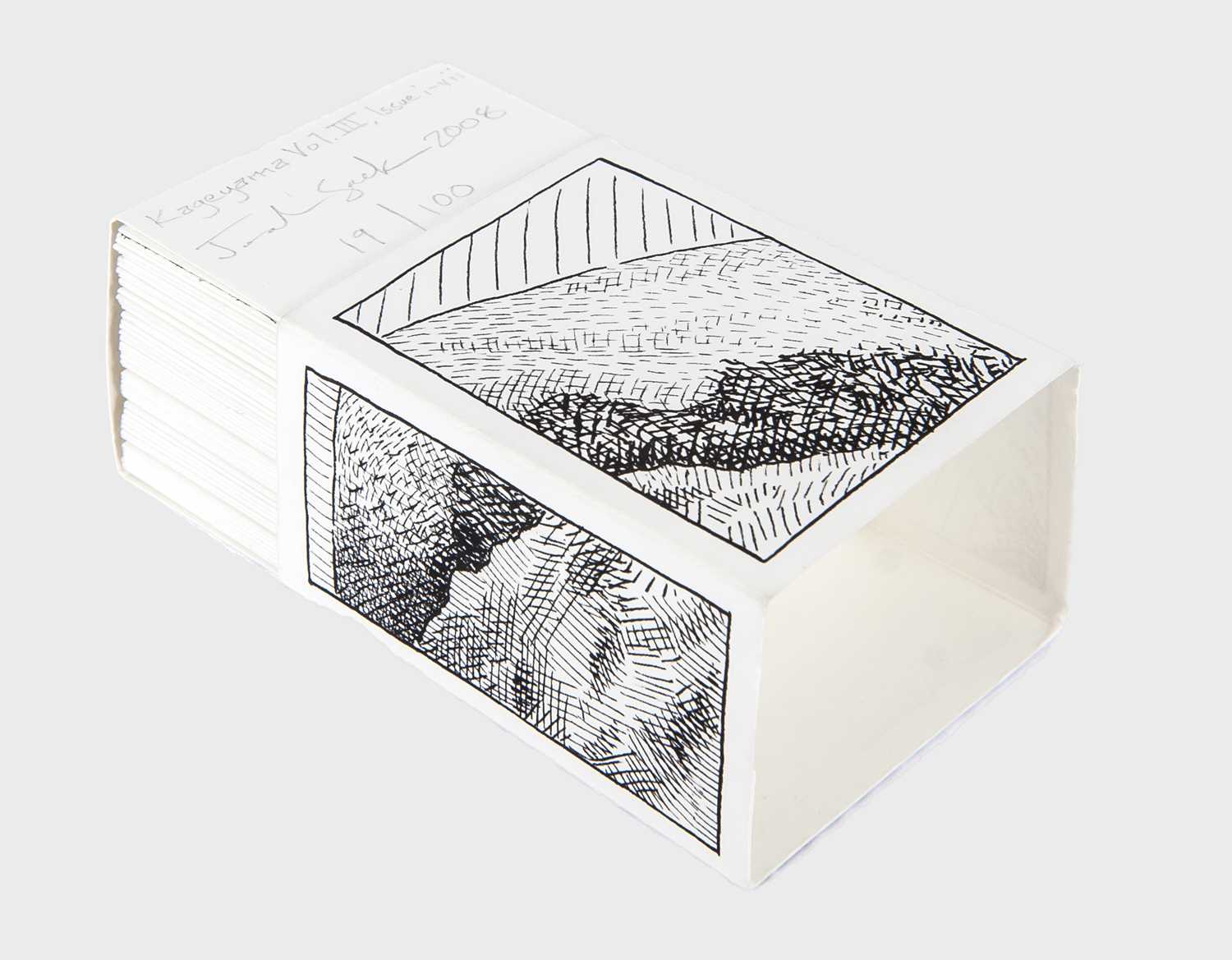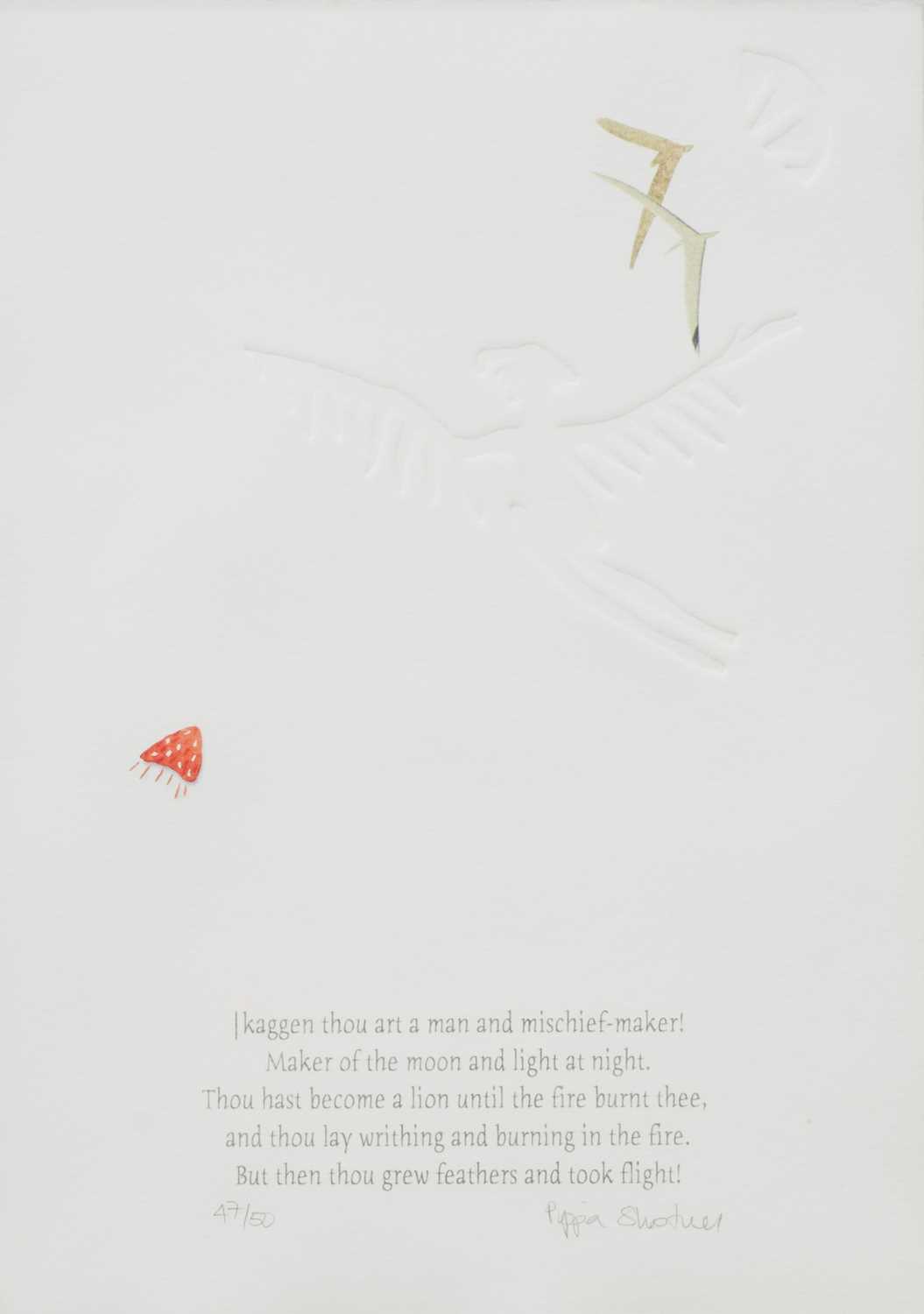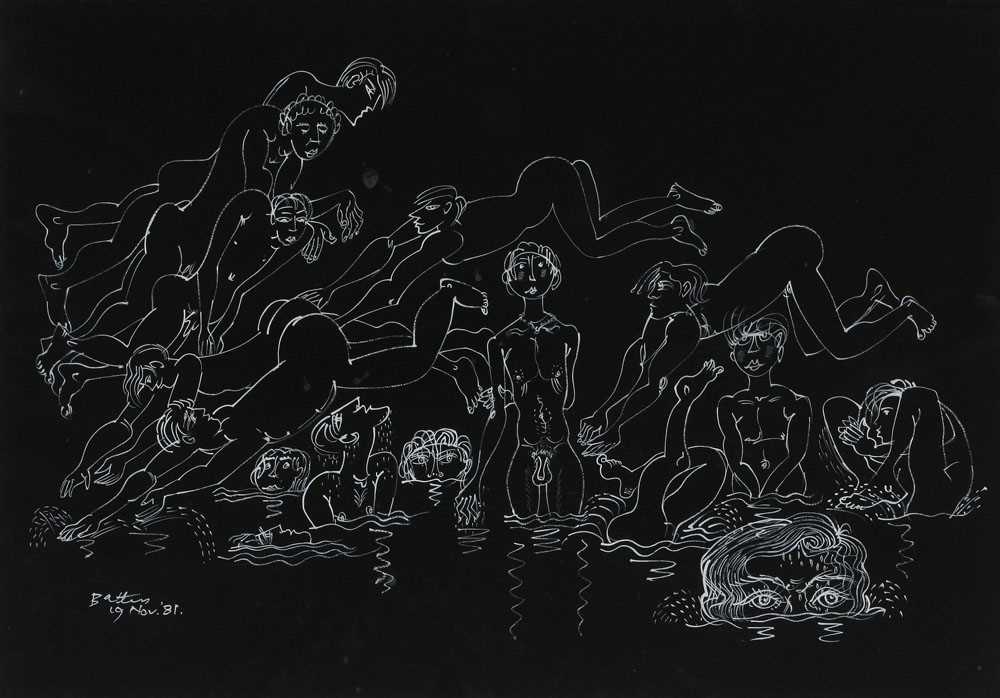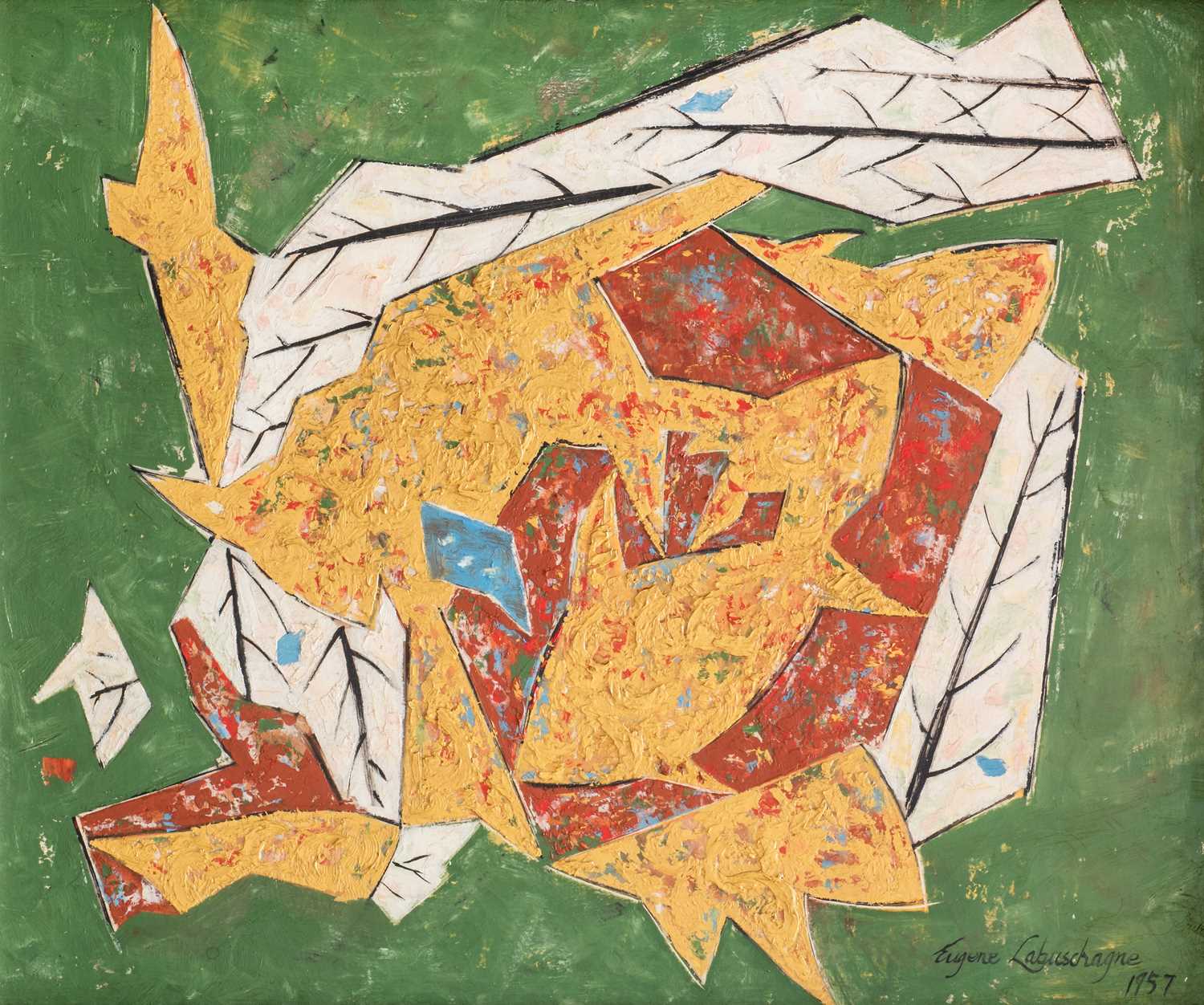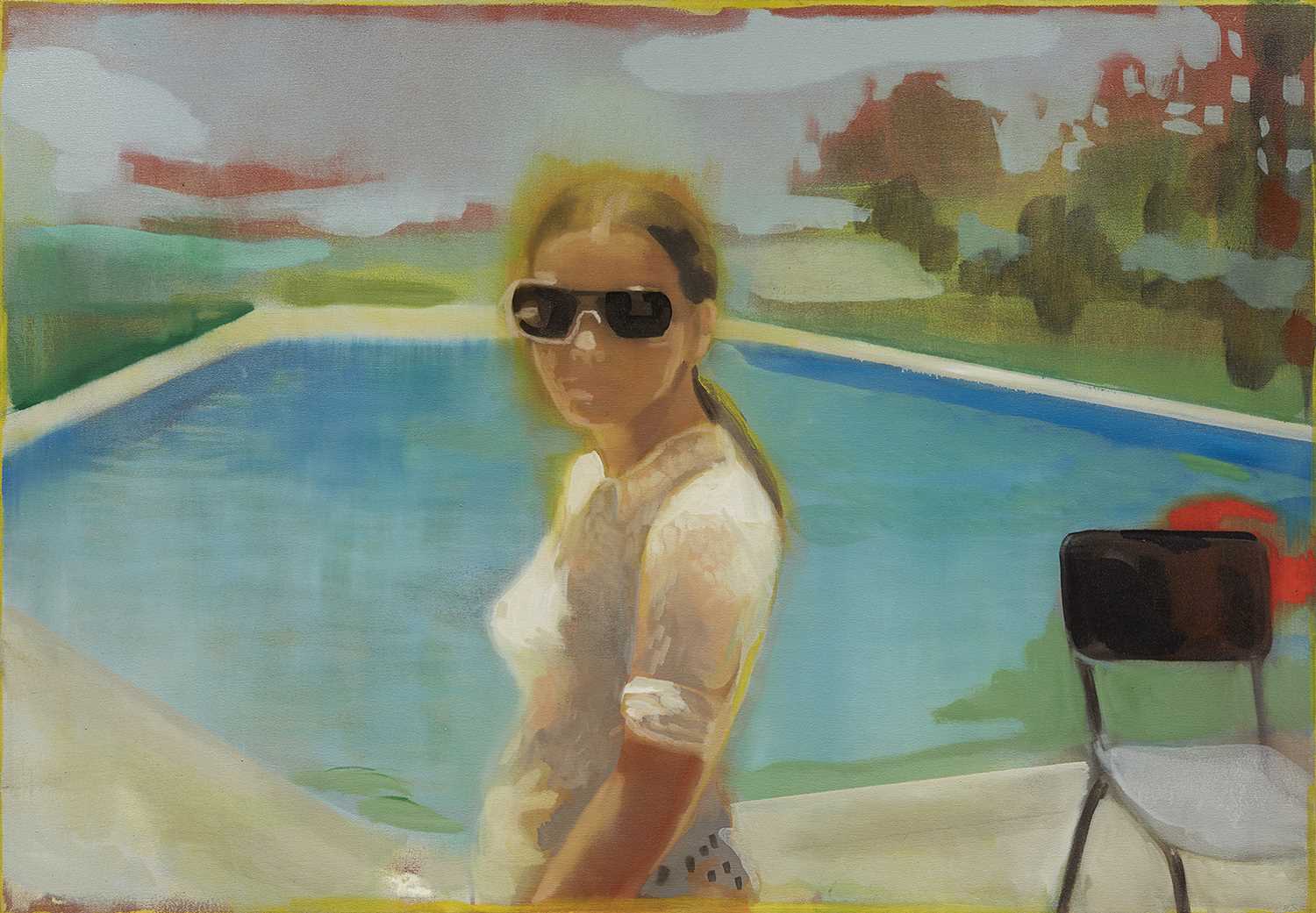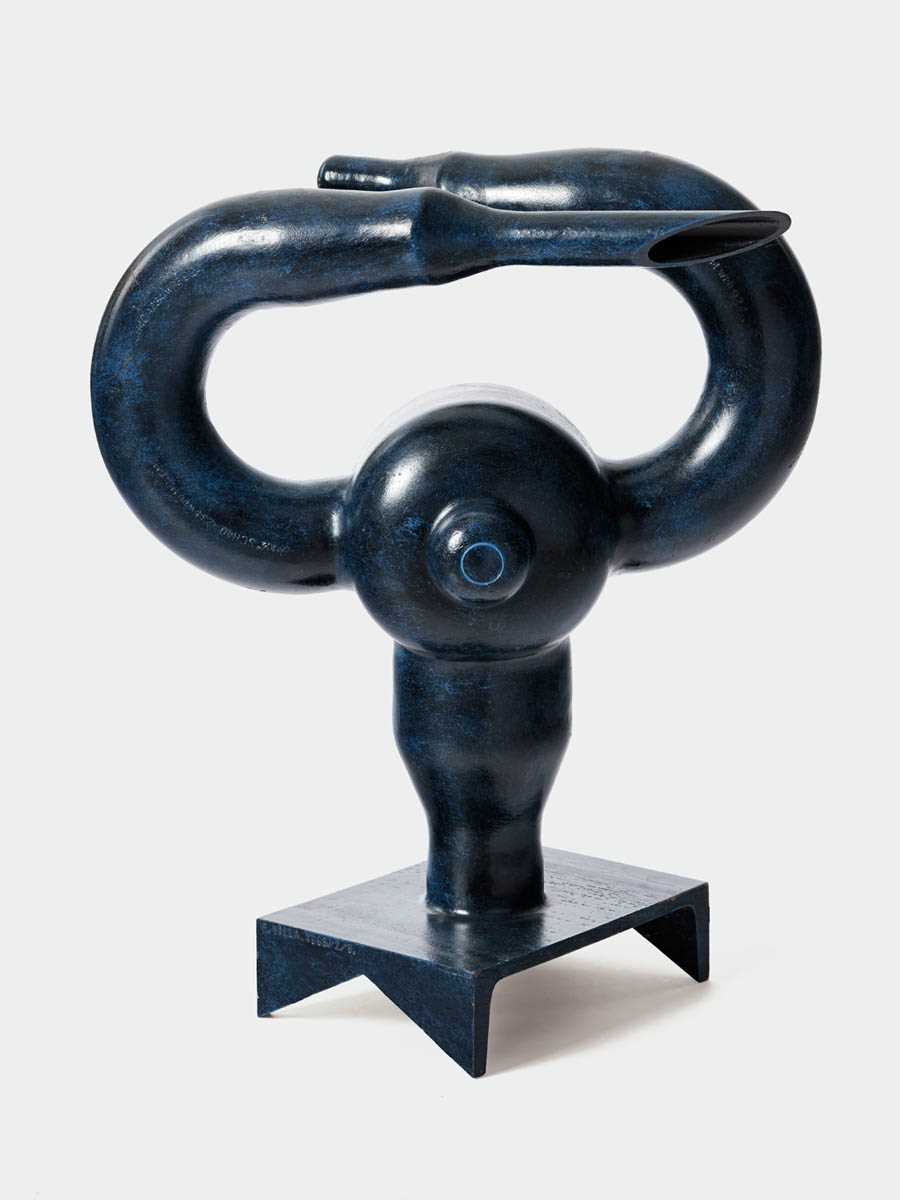28th Oct, 2018 8:30
Historic, Modern and Contemporary Art
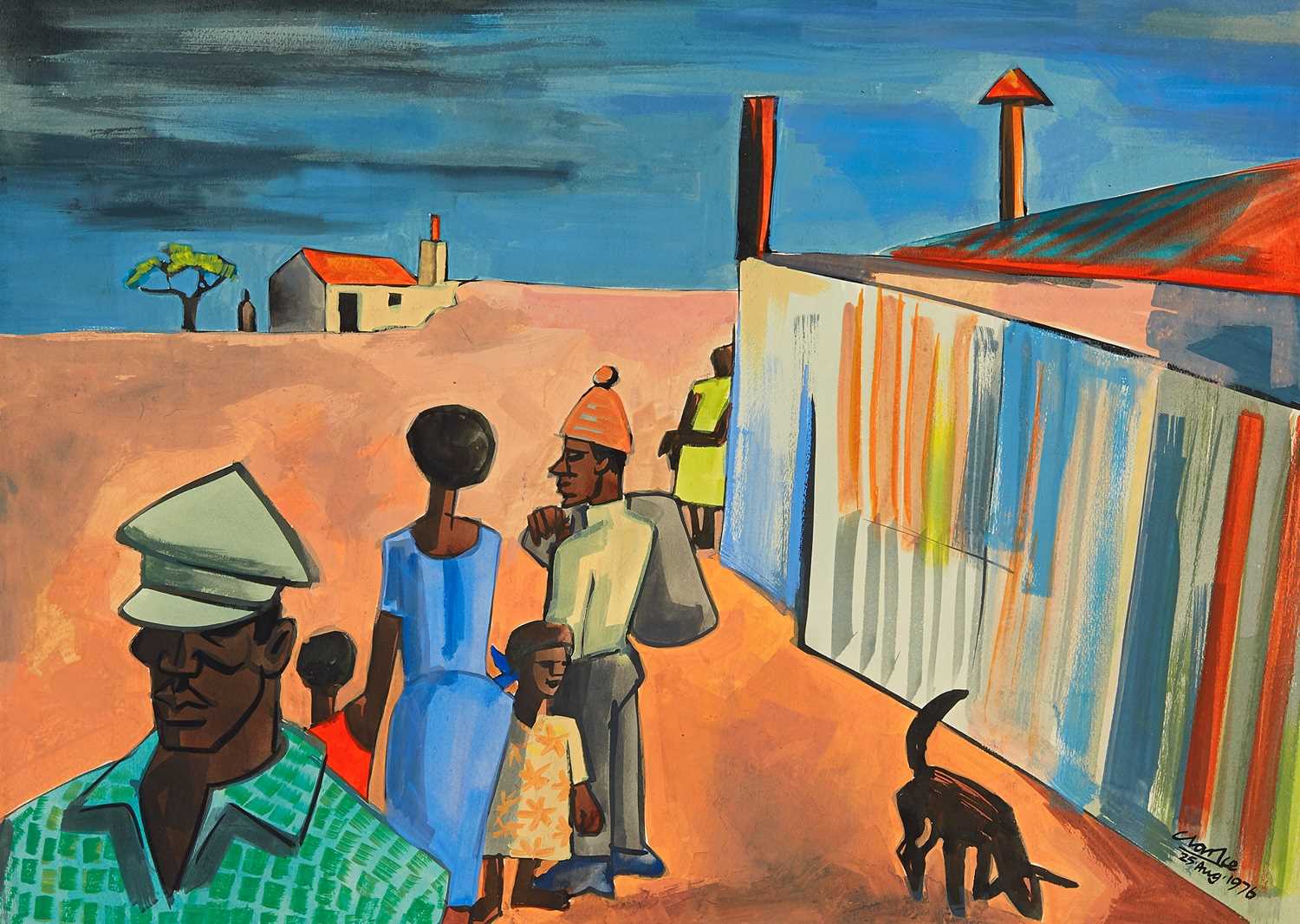
51
Peter Clarke (South Africa 1929-2014)
Dinge kannie so aangaan nie (sic)
gouache on paper
Artwork date: 1976
Signature details: signed and dated; inscribed with the title and medium on the reverse
gouache on paper
Artwork date: 1976
Signature details: signed and dated; inscribed with the title and medium on the reverse
(1)
48 x 68 cm
Acquired from the artist's estate.
Notes:
Like a good vintage wine, the further we go back to Peter Clarke’s earlier works – treated with ambivalence when they were produced – the more we learn to appreciate their impact.The more we look, the more we realise that Clarke’s work wasn’t just prescient, it was insightful about the time of its making. It is upon discovering this spatio-temporal
acumen, expressed in the simplest non-posturing and yet most contemplative expressionism, that we realise that it is us who have been playing catch up to Clarke’s oeuvre. This sensitivity and insight is brilliantly expressed in these two works, Their shadow hangs over us (1974) (Lot 53), and Dinge kannie so aangaan nie (1976) (Lot 51). Their concerns and visual prose, slightly anachronistic, invoke a variation of the typical township-outdoor themes, albeit without their street buzz. It’s such, that from the perspective of the reigning
approaches in the 1970s, they appear subdued in comparison to the more confrontational aesthetic of the time. In the 1970s, committed anti-apartheid or ‘protest’ art developed in response to the political provocations of the regime. This type of art took precedence over the largely reflective demeanour of the previous decades, but upon closer examination, Clarke’s work, despite being more subdued, exposes the blind spots of protest culture, subtly questioning adopted superficial distinctions between reflection and confrontation. Clarke was evicted from Simon’s Town in 1972, and dumped in a newly established coloured township called Ocean View, ironically situated away from the sea. In the wake of the Group
Areas Act, as art historians Phillippa Hobbs and Elizabeth Rankin have noted, Clarke’s work reflects the spread of the social dislocation these forced removals caused, by way of
documenting and capturing the subsequent uncertainty.1 Both works depict communities of seemingly bewildered and secluded people in an environment threatened by disappearance.
This is an impression immediately suggested by the ambivalent titles that register a sense of testimony and refusal. Documenting this tragedy of perpetual loss of self and place, is another way of refusing to forget and refusing to accept the status quo. Are these representations of the same place and reality taken from different angles and times? Consider how in both images, the warm washes of yellow and orange spread from the foreground to the outer edges of the picture, connecting the sand dunes (a running motif in Clarke’s work from the 1960s) with the cabins, and are only broken at the horizon by mournful washes of blue and black skies. Patches and scribbles of cold and warmer colours punctuate the frame in ways that intensify the feelings of dejection and confusion that sculpt the facial expressions of the figures. From palette to the composition, there’s a pictorial continuity or relation that perhaps can only be understood through a shared collective affect that communities afflicted by similar situations know. Time, here, seems inconsequential. The injury is etched in the memory like a scar, or a wound, that when the mind remembers, pictures of displacement, unfolding like a blanket of despair. These truths have not, as some have asserted,been particular convictions of his later years. Instead, one can pick them up in the reticent expressions of his much earlier works, subtly expressed through those quotidian moments and definitive palette. So it’s not only a matter of Clarke’s work growing on you, but how the artist stimulates our growing in how we read him.
Athi Mongezeleli Joja
You can place an absentee bid through our website - please sign in to your account on our website to proceed.
In the My Account tab you can also enter telephone bids, or email bids@aspireart.net to log telephone/absentee bids.
Join us on the day of the auction to follow and bid in real-time.
The auction will be live-streamed with an audio-visual feed.
Auction: Historic, Modern and Contemporary Art, 28th Oct, 2018
Aspire Art Auctions brought a significant double-header of top lot leads to this sale.
Stellar results were achieved for internationally prominent William Kentridge and Alexis Preller, one of South Africa’s most respected and collectable modern artists. Collectors were attracted to Kentridge’s remarkable, Drawing from Stereoscope (Double page, Soho in two rooms) (1999), which sold for R6 600 400, while Preller’s Adam (1972), sold for a world record at R9 104 000. Modern offerings also included works by Peter Clarke, Kenneth Bakker, and Douglas Portway, while the contemporary segment included Moshekwa Langa, Penny Siopis, Simon Stone, Clive van den Berg, and Georgina Gratrix, amongst others.
HIGHLIGHTS
Currency conversions are based on the exchange rate at the auction's start time and date. Bidders should verify the current exchange rate on the day of the sale. All invoices and payments must be made in South African Rands.
IMPORTANT NOTICE:
Logistics
While we endeavour to assist our Clients as much as possible, we require artwork(s) to be delivered and/or collected from our premises by the Client. In instances where a Client is unable to deliver or collect artwork(s), Aspire staff is available to assist in this process by outsourcing the services to one of our preferred Service Providers. The cost for this will be for the Client’s account, with an additional Handling Fee of 15% charged on top of the Service Provider’s invoice.
Aspire Art provides inter-company transfer services for its Clients between Johannesburg and Cape Town branches. These are based on the size of the artwork(s), and charged as follows:
Small (≤60x90x10 cm): R480
Medium (≤90x120x15 cm): R960
Large (≤120x150x20 cm): R1,440
Over-size: Special quote
Should artwork(s) be collected or delivered to/from Clients by Aspire Art directly, the following charges will apply:
Collection/delivery ≤20km: R400
Collection/delivery 20km>R800≤50km
Collection/delivery >50km: Special quote
Packaging
A flat fee of R100 will be added to the invoice for packaging of unframed works on paper.
International Collectors Shipping Package
For collectors based outside South Africa who purchase regularly from Aspire Art’s auctions in South Africa, it does not make sense to ship artworks individually or per auction and pay shipping every time you buy another work. Consequently, we have developed a special collectors’ shipping package to assist in reducing shipping costs and the constant demands of logistics arrangements.
For buyers from outside South Africa, we will keep the artworks you have purchased in storage during the year and then ship all the works you have acquired during the year together, so the shipping costs are reduced. At the end of the annual period, we will source various quotes to get you the best price, and ship all your artworks to your desired address at once.
Aspire Art will arrange suitable storage during, and cost-effective shipping at the end, of the annual period.
Collections
Collections are by appointment, with 24-hours’ notice
Clients are requested to contact the relevant office and inform Aspire Art of which artwork(s) they would like to collect, and allow a 24-hour window for Aspire Art’s logistics department to retrieve the artwork(s) and prepare them for collection.
Handling Fee
Aspire Art charges a 15% Handling Fee on all Logistics, Framing, Restoration and Conservation arranged by Aspire.
